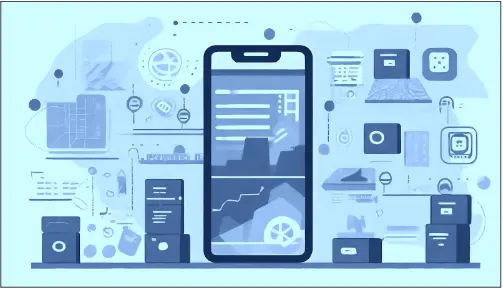For decades, spreadsheets have been the workhorses of warehouse inventory management. But their reign is drawing to a close, as a powerful trio of technologies emerges: real-time data synchronization, advanced AI insights, and blockchain security. Let's delve into the limitations of the old ways and explore how this innovative combination is revolutionizing warehouse operations.
The Downsides of Spreadsheet-based Inventory Management
Spreadsheets, while familiar and accessible, come with their own set of challenges. Manual data entry is prone to human error, leading to inaccuracies and inconsistencies. Updating information is time-consuming, does not reflect real-time inventory, hindering responsiveness and causing delays. And their limited connectivity creates information silos, making it difficult to get a holistic view of your inventory across different departments. As warehouses grow in size and complexity, spreadsheets become increasingly inadequate for keeping up with the demand for real-time data. Simply put, it's not scalable.
The ERP Dilemma
While traditional ERPs offer automation, their hefty price tags, complex implementation, and rigid structures create an efficiency vs. agility dilemma. They're workhorses struggling to keep pace with today's dynamic markets. The crucial question becomes: adapt and seek flexibility with new solutions, or remain hobbled by traditional ERPs' limitations? The future demands agility; explore alternatives and venture beyond the limitations of the past.
Embracing the Trio – Spreadsheet, Blockchain, and AI
But the future beckons with a different rhythm, one where spreadsheets, blockchain, and AI join forces to create an inventory nirvana:
1/ Barcoding with Spreadsheet Real-time Sync
Imagine your familiar spreadsheet, infused with the lifeblood of real-time data. By integrating barcoding technology with spreadsheet-based systems, warehouses can achieve real-time synchronization of data. This streamlined approach not only minimizes errors but also facilitates easy integration with existing systems, requiring almost no learning curve for warehouse staff. The result is a more efficient and accurate inventory management process.
2/ Gen AI for Insight: Real-Time Restocking Forecast and Risk Management
Enter the era of Generative Artificial Intelligence (Gen AI). This cutting-edge technology offers real-time insights into inventory trends, enabling accurate restocking forecasts and proactive risk management. The ability to analyze vast amounts of data rapidly empowers warehouse managers to make informed decisions, reducing the likelihood of stockouts and overstock situations.
3/ Blockchain for Traceability, Streamlined Record Keeping, and Automated Trust
Blockchain technology revolutionizes the way warehouses handle traceability, record keeping, and trust verification. With a decentralized and secure ledger, warehouses can trace the journey of each product, ensuring transparency in the supply chain. Automated trust mechanisms within the blockchain enhance collaboration among stakeholders, fostering a more efficient and trustworthy ecosystem.
Future-Proofing Warehouse Operations
This isn't just technological poetry – it's a blueprint for tangible results. Studies show that AI-powered inventory management
can reduce stockouts by 50%, optimize warehouse space by 25%, and even boost
employee productivity by 10%. Blockchain, with its inherent transparency, can
minimize fraud and theft by up to 30%, while streamlining audits and compliance processes. Overall, adding Generative AI and blockchain to your existing barcode scanning and spreadsheet setup can significantly enhance your warehouse operations by providing real-time insights, streamlining workflows, and fostering trust and transparency.


